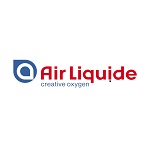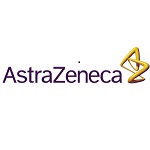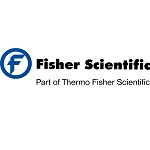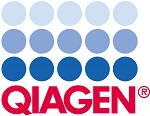Did you miss the BEBPA Host Cell Protein Conference this year? Here are the takeaways you need to know.
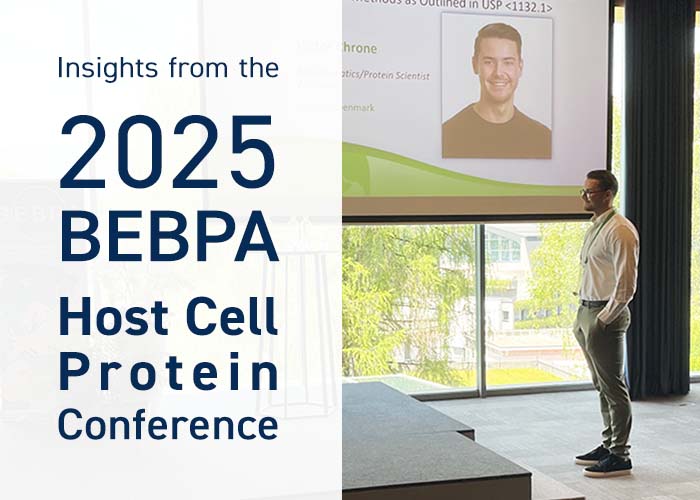
May 28-30, 2025, BEBPA’s 13th Host Cell Protein (HCP) Conference took place in Bled, Slovenia, in a hybrid format where it was possible to follow the conference virtually.
This year’s BEBPA conference offered morning walks by beautiful Lake Bled to spark insightful scientific discussions, and the non-commercial setting fostered open dialogue between regulators, industry scientists, and technology developers. As always, the BEBPA HCP Conference remains a uniquely valuable forum for advancing shared understanding of HCP analytics, best practices, and regulatory expectations, shaping the future of HCP control in biopharmaceutical development.
Here is a summary of the most important topics, trends, and takeaways from the 2025 conference:
1. Regulatory perspectives and clinical risk assessment
Although regulatory agencies like the EMA and FDA have not specified numeric HCP limits, “regulatory memory” and comparison to similar licensed products offer some benchmarks. Regardless of product class, regulatory expectations are clear: HCPs must be reduced to the lowest possible levels through robust, consistent manufacturing processes and validated analytical methods. The overarching regulatory goal is to ensure product quality, efficacy, and, most importantly, patient safety.
Acceptance criteria for residual impurities, including HCPs, should be guided by data from preclinical and clinical studies, as well as from manufacturing consistency lots. Regulatory agencies emphasize the importance of aligning data collected during development with that submitted in the marketing application (e.g., MAA or BLA), underscoring the need for early and ongoing risk assessment strategies.
In recent years, advances in LC-MS-based proteomics have enabled the profiling and relative quantification of individual HCPs, enhancing our ability to assess biological relevance and immunogenic potential. Identifying any HCPs that exceed acceptable thresholds or exhibit concerning biological or enzymatic activity has become increasingly critical. In such cases, developers are expected to act by eliminating the impurity or implementing targeted assays to monitor and control it.
Highlights
Erika Friedl, Senior Quality Expert at the Paul-Ehrlich-Institut (EMA), provided an overview of the current regulatory expectations regarding HCP control and characterization.
Friedl emphasized the increasing regulatory focus on individual HCP characterization and control across traditional biologics and advanced therapies. While ELISA remains the standard for routine HCP monitoring, MS is gaining traction as a complementary orthogonal method, evident in recent marketing authorization applications (MAAs). Friedl highlighted the utility of LC-MS for identifying and quantifying HCPs during process development and characterization, process changes, and manufacturing site transfers, as well as for monitoring individual high-abundance HCPs in the final product.
Biologics developers should use a knowledge-based approach for problematic HCPs, referring to increasing data and knowledge available on HCPs in e.g., scientific publications on HCPs of concern from Biophorum, and use of best practice methods in USP General Chapters <1132.1< and <1132>.
Friedl also cautioned that reagent and assay changes over a product’s lifecycle can lead to significant regulatory delays if not proactively managed. A lifetime supply of critical reagents is ideal, but when this is not feasible, timely comparability studies and robust documentation are essential to avoid licensing delays.
Finally, Friedl offered some points for discussion of the unique regulatory challenges pertaining to Advanced Therapy Medicinal Products (ATMPs) such as cell, gene, and RNA therapies. As these products continue to advance, both developers and regulators are focused on avoiding delays that could hinder market access. In some cases, such as lentiviral vectors and other enveloped viruses, a certain level of residual HCPs may be unavoidable. Nonetheless, HCP control strategies and risk assessments are required, and commercial manufacturing processes should be improved to mitigate safety risks.
Sapphire Sloan, Global Change Facilitator at BioPhorum, and Nisha Palackal, Senior Director at Regeneron Pharmaceuticals, presented on behalf of the BioPhorum Clinical Risk Assessment team, which has developed a framework for clinical safety risk assessment of HCPs.
Focus is increasingly on risk assessment for identified HCPs due to the evolution of LC-MS in the last ~10 years. The BioPhorum team recommends that upon identification of ‘watchlist’ HCPs – HCPs with uncertain risk but plausible impact – clinical safety risk assessment should be performed using 1) prior knowledge from published sources, previous experience, and industry awareness, 2) data from immunogenicity tools, e.g., in silico, in vitro and in vivo studies; 3) toxicology study data; 4) clinical data.
In addition, the immunogenicity and biological activity of individual HCPs should be considered, as well as clinical factors such as treatment indication, patient population, route of administration, and dose frequency and volume. At the early stages of product development, the risk will be high due to lack of product-specific knowledge. The understanding will improve as new information is integrated into the risk assessment, and phase-appropriate mitigation strategies can be implemented. It was underscored that the CMC team should coordinate risk assessment with a cross-functional team of toxicologists and clinicians.
Based on this, the BioPhorum team has developed structured frameworks to assess the immunogenicity and biological activity risks of individual HCPs. This holistic view enables a more nuanced evaluation of how an HCP might affect patient safety or product quality.
A case study on PLBL2 showed that HCP risk profiles can vary significantly depending on the clinical setting. However, the team acknowledged that clinical outcomes remain difficult to predict, especially given the limited number of real-world adverse events linked to HCPs – a reassuring sign for drug safety, but a constraint on refining risk models.
The Biophorum Clinical Risk Assessment will provide guidance on clinical risk assessment in a cross-company industry review paper to be published in Biotechnology and Bioengineering in 2025.
Fengqiang Wang, Principal Scientist at Merck, Frieder Kröner, Principal Scientist at Novartis Pharma, and Kevin Van Cott, Associate Professor at the University of Nebraska-Lincoln, led a practical and forward-looking workshop on navigating HCP analytics through a strategic and systematic approach.
The workshop emphasized the importance of holistic, science- and risk-based approaches for detecting, analyzing, and controlling HCPs throughout the development lifecycle. The aim is to establish meaningful, phase-appropriate residual HCP specifications that ensure product quality, safety, and efficacy.
As LC-MS has matured over the past decade, it is no longer viewed as an emerging technology but has become a well-established practice. LC-MS provides a more profound insight into HCP identity, supporting risk assessments, immunogenicity evaluations, and enzymatic activity assays that are not possible with ELISA.
The panel advocated for early LC-MS analysis of preclinical toxicology batches to catch high-abundance or potentially immunogenic HCPs that may escape ELISA detection before progressing to clinical trials.
Performing ELISA coverage assessments early in development was also highlighted as a critical step to identify potential assay limitations, such as quantitation limit range (lack of sensitivity), dilutional non-linearity, or cross-reactivity with the drug substance. The workshop panel emphasized the need to evaluate ELISA coverage of specific problematic HCPs using MS-based methods, e.g., ELISA-MS™.
2. US Pharmacopeia General Chapter <1132.1> and GMP validation
The U.S. Pharmacopeia General Chapter <1132.1> on Residual Host Cell Protein Measurement in Biopharmaceuticals by Liquid Chromatography - Mass Spectrometry officially took effect on May 1, 2025. Unsurprisingly, it was a recurring topic across nearly every presentation and workshop at this year’s BEBPA HCP Conference.
As mass spectrometry continues to gain traction as a powerful tool for HCP analysis, regulatory expectations are shifting to support its use in both product development and submission documentation. USP-NF <1132.1> offers the industry a much-needed standardized approach to implementing LC-MS-based HCP quantitation, covering key considerations such as method selection, validation strategy, and data interpretation. This guide reflects a broader shift toward integrating MS into biologics workflows and marks a significant step in aligning scientific innovation with regulatory compliance and, ultimately, patient safety considerations.
Highlights
Using a purified monoclonal antibody (mAb) drug substance, the team evaluated key ICH Q2(R2) validation parameters, including accuracy, precision, linearity, and specificity of the methods. All 3 methods demonstrated strong linearity and high precision, while also revealing distinct advantages and limitations that should inform method selection based on the specific analytical context.
Importantly, Chrone emphasized that USP <1132.1> lays the foundation for standardizing MS-based HCP quantification, enabling consistent comparison across samples, products, and even laboratories. This standardization will significantly enhance the industry's ability to conduct individual HCP risk assessments and streamline regulatory alignment across programs.
The presentation also included a summary of projects validated according to ICH Q2 guidelines for use in QC and GMP routine testing at Alphalyse.
The study findings have been published in a peer-reviewed journal article:
Host Cell Protein Quantitation by LC-MS: Experimental Demonstration, Qualification, and Comparison of Methods in USP <1132.1>.
Somar Kalil, Principal Scientist at GSK vaccines, highlighted a strategic shift in host cell protein (HCP) monitoring to bridge the gap between discovery proteomics and GMP-compliant quality control (QC). Anticipating that LC-MS is likely to become a regulatory requirement in the future, GSK actively works to evolve discovery-based proteomics into a platform capable of supporting in-depth process characterization and GMP-compliant lot release.
Traditionally, ELISA has dominated HCP analysis due to its regulatory acceptance and simplicity, but its limitations are increasingly apparent: limited specificity and coverage, and no protein-level resolution. Targeted mass spectrometry (e.g., MRM/PRM) provides high sensitivity but is limited to predefined HCPs and may require redevelopment when processes evolve. DIA-MS offers broader HCP coverage but faces data processing constraints, making it less suitable for a QC environment or release testing.
In response, GSK has developed a quantitative approach using shotgun proteomics with label-free quantification. This method is applicable across different products and processes, and is also amenable to validation according to ICH Q2(R2) guidelines.
3. ELISA challenges
The enzyme-linked immunosorbent assay (ELISA) continues to be the workhorse of HCP analysis in biotherapeutic development. However, ELISA challenges are becoming larger obstacles, including a lack of reagents, the need to bridge to new reagents, uncertainty in detecting problematic HCPs, and the risk of project delays.
As biologics become increasingly complex, and regulatory demands for risk-based control of problematic impurities grow, the traditional ELISA methods are being pushed to their limits – and beyond.
One of the most pressing issues is the availability and suitability of reagents. The development and validation of high-coverage, process-relevant antibody reagents can take years, and many developers, especially those working with non-platform processes or novel expression systems, struggle with gaps in coverage, reagent variability, and lot-to-lot inconsistency.
Moreover, as regulatory expectations shift toward more comprehensive risk assessments and deeper understanding of impurities, the limitations of ELISA, particularly its inability to identify or characterize specific HCPs, become increasingly problematic.
Several presentations at BEBPA explored the challenges facing ELISA-based HCP analysis, the consequences of relying on incomplete or outdated reagent sets, and the growing need for orthogonal strategies and smarter risk-based approaches to meet both development and regulatory demands.
Highlights
While the industry often defines HCP specifications by numerical thresholds, e.g., the informal benchmark of 100 ppm, Margarita Sabater emphasized that such figures are largely arbitrary without context and can be misleading. There is no such thing as a safe level of total HCP content; safety depends entirely on the specific HCPs in question, necessitating identification and quantitation for data-driven risk assessment. For this reason, regulatory agencies like the FDA and EMA do not set fixed limits in ppm but instead require validated assays, sufficient immunoreagent coverage, and scientifically justified specifications based on risk.
Using case studies from Genmab's platform mAb programs, Margarita Sabater demonstrated how changes in ELISA reagents – even those with comparable coverage – can yield significantly different HCP results. In one example, LC-MS revealed the presence of immunogenic or aggregation-prone HCPs in amounts too low to be flagged by ELISA, yet still impactful on product quality.
Margarita Sabater proposed moving beyond the black-box nature of ELISA by using LC-MS to build a “safe list” of all non-problematic HCPs found in clinical lots and tying HCP acceptance criteria to biological relevance rather than total quantity. She challenged the industry to move away from HCP-ELISA for release testing and use LC-MS instead.
Fengqiang Wang, Principal Scientist at Merck, presented a compelling case for the strategic transition from a generic to a process-specific HCP ELISA assay during late-phase development.
In a case study of a CHO-produced Fc-fusion protein, a generic CHO HCP kit supported early clinical development but was found in Phase III to only cover ~60% of process-specific HCPs. This gap in detection prompted the development of a process-specific HCP assay tailored to the commercial manufacturing process.
As part of the comparative assessment, LC-MS profiling was used to demonstrate a high degree of similarity between the HCP profiles in the production harvest cell culture fluid (HCCF) and the null cell harvest used for both the ELISA standard and to generate anti-HCP antibody reagents.
4. Product stability and polysorbate-degrading host cell proteins
Polysorbates (PS), widely used as non-ionic surfactants in biologic formulations, play a critical role in stabilizing biotherapeutic proteins. However, their susceptibility to enzymatic hydrolysis by HCPs poses an ongoing challenge to product stability. Even at very low concentrations, residual hydrolytic enzymes can degrade polysorbates, leading to the formation of free fatty acid (FFA) particles, which in turn increase the risk of protein aggregation and particle formation.
This threat to product stability is particularly problematic because it can occur late in development, when options for process changes – such as generating new cell lines – are limited and may result in significant delays. As such, early identification and mitigation of PS-degrading HCPs are crucial for ensuring long-term product stability and maintaining manufacturing timelines.
Polysorbate degradation and its impact on product quality continue to be a key area of focus at BEBPA. This year’s conference featured several talks exploring enzymatic mechanisms of degradation, analytical detection strategies, and upstream approaches to risk mitigation.
Highlights
Inn Yuk, Senior Director at Genentech, highlighted a growing challenge in modern biologics manufacturing: the unintended consequences of industry-wide optimization efforts, which have made HCP-driven PS degradation a larger challenge today than it was 10 years ago. As developers push for increased cell growth and higher yield, they also inadvertently promote the expression of HCPs that catalyze PS hydrolysis.
Genentech has tackled this challenge at the cell culture level by identifying and knocking out specific CHO HCPs known to degrade polysorbates, hoping to thereby reduce the enzymatic activity that contributes to PS hydrolysis and the formation of free fatty acid (FFA) particles. The knockouts successfully reduced hydrolytic activity, but did not fully eliminate it. The partial success suggests that additional unidentified, and possibly undescribed in the literature, hydrolases may contribute to PS degradation. Currently, about 20 hydrolase enzymes are known, and new ones are discovered continuously. Some enzymes remain highly active at sub-ppm levels, underscoring a disconnect between total HCP quantification by ELISA and functional risk to the final product.
Inn underscored the need for cross-functional collaboration to manage PS degradation risks holistically, from early identification and knockout of problematic HCPs, to improved downstream clearance, and tight control of excipient quality and raw materials such as metal and glass to reduce the risk of FFA precipitation. The Genentech team found that FFA release rates at harvest and earlier stages of purification differed from that at the final purification step, underscoring that enzyme activity and impurity assays at late-stage purification remain essential for evaluating PS degradation risk.
In her presentation, Inn also applauded Novartis for sharing their findings on PS-degrading HCPs, noting that “it takes a village” to catch problematic HCPs and improve patient safety.
5. Vaccines and viral vector-based therapies (AAVs)
As regulatory expectations around host cell protein (HCP) levels have matured alongside mAb- and recombinant protein-based biologics, current guidance has become deeply rooted in platforms like CHO cells, which are well-characterized and supported by established analytical tools. However, this mAb-centric framework is increasingly misaligned with the needs of emerging modalities like vaccines and viral vector-based gene therapies.
Vaccines and viral vector-based therapeutics present distinct challenges that stretch conventional HCP testing strategies. Many vaccine- and AAV-producing cell lines, such as Baculovirus, HEK293, Sf9, as well as exotic cell lines for vaccines, such as Vero, chicken and duck embryo fibroblast cells, have largely unmapped proteomes, and prior knowledge necessary to develop effective control strategies is limited. Compounding this, vaccines and AAV therapies are often highly heterogenous drug products, contributing to more complex impurity profiles that call for new, modality-specific HCP detection and risk assessment tools to ensure patient safety, maintain product quality, and meet regulatory expectations.
Smaller companies, which make up much of the AAV and vaccine space, often lack the infrastructure, funding, or in-house proteomic expertise to develop customized HCP assays. Unlike the mAb field, with its broad catalog of generic ELISA kits and well-defined LC-MS workflows, vaccine and viral vector platforms remain under-researched in this context. Outsourcing impurity analysis is furthermore made difficult by the biosafety requirements of genetically modified systems and limited material availability.
Several presentations and one workshop focused on how developers in the vaccine and AAV fields are navigating these gaps: adapting existing tools, proposing new strategies, and reevaluating what HCP control looks like for complex, next-generation biologics.
Highlights
Regulatory expectations around HCP testing for vaccines are increasingly being shaped by standards designed for mAbs and other conventional biotherapeutics, despite critical contextual differences. Unlike mAbs, vaccines are highly complex products that encompass a wide range of modalities, expression systems, and delivery methods, and the intended immunogenicity of the final product also makes HCP-related risk assessment fundamentally different. In addition, ELISA may not be feasible due to formulation complexity, necessitating the use of orthogonal technologies, including quantitative mass spectrometry.
In Carpick’s words, “HCP quantitation in vaccines by LC-MS is a reality,” referencing USP-NF <1132.1> and calling for the industry to move away from animal-derived reagents, i.e., anti-HCP serum. He encouraged a risk-based approach to HCP characterization, using mass spectrometry (LC-MS/MS) to identify residual proteins in the most purified, monovalent stage of the drug substance, prior to formulation with adjuvants or other antigens. Relevant Critical Quality Attributes (CQAs) should be defined for the specific vaccine, e.g., total HCP content, and HCP profile.
One case study presented by Carpick used LC-MS for HCP quantitation to accelerate development of a recombinant COVID-19 vaccine expressed in baculovirus. This strategy got regulatory approval.
Carpick emphasized that while there is limited evidence linking HCPs in vaccines to serious adverse events, HCP monitoring remains valuable, not only to meet evolving regulatory expectations but also as an internal metric of process consistency and product quality.
Robert Tikkanen, Analytical Development Scientist at AskBio, addressed critical gaps in host cell protein (HCP) monitoring for adeno-associated virus (AAV) therapeutics, highlighting the limitations of current ELISA-based release assays.
One of the key differences in AAV manufacturing is the reliance on cell lysis for product recovery, as opposed to secretion used in mAb production. This inherently increases the host-derived impurity burden early in the process. Compounding the issue, AAV purification schemes often involve fewer downstream clearance steps, and they vary significantly based on serotype and vector design. As a result, residual HCP profiles are diverse, and problematic HCPs may escape detection with traditional ELISA methods. This raises concerns about both patient safety, especially given the targeted and sensitive administration routes of AAV therapies, and product stability, as some HCPs may degrade the therapeutic itself or its excipients.
Most AAV therapeutics are still in early clinical stages and downstream processes may not yet be locked, calling for flexible analytical techniques. Tikkanen proposed a mass spectrometry (MS)-based assay strategy to support early-stage HCP profiling and risk mitigation. By implementing MS tools proactively, manufacturers can catch issues early in development and make more informed decisions about the necessity of product-specific ELISA kits or the development of validated targeted MS methods.
6. HCP aggregation and purification challenges
Effective host cell protein (HCP) control depends not only on sensitive detection methods, but also on a deep understanding of why certain impurities persist through downstream processing.
Highlights
Protein A chromatography typically reduces overall HCP content by ~3 logs but does not proportionally reduce the diversity of HCP species. Historically, three primary mechanisms have been proposed to explain HCP persistence: co-elution due to similar chromatographic properties, product association (hitchhiking), and formation of heteroaggregates, suggested by Gagnon et al in 2014.
Lenhoff’s team investigated the hitchhiking hypothesis and found that most HCPs do not exhibit strong or specific binding to the mAb, with only a few low-abundance HCPs showing >70% binding. Instead, the persistence of many HCPs appeared driven by high initial abundance and mass-action effects, suggesting that quantity, not binding strength, is a more significant factor in HCP persistence.
Lenhoff also provided evidence that a major contributor to HCP persistence is the formation of large heteroaggregates of around 100 nm that were found to contain mAbs, DNA, and HCPs, and were not efficiently cleared by Protein A chromatography. The aggregates are likely caused by cellular stress responses to overexpression of therapeutic proteins, triggering the release of cellular defense components such as chaperones and proteasomal proteins. Aggregates pose significant immunogenicity risks in patients, and may also limit the effectiveness of ELISA-based HCP assays, as impurities buried inside aggregates may evade immune recognition during antibody generation and also have poor detection by ELISA.
Lenhoff concluded that although the industry often distinguishes between product- and process-related impurities, heteroaggregates contain both, blurring conventional boundaries. A deeper understanding of and targeting strategies for heteroaggregates could significantly improve the clearance of “difficult-to-remove” HCPs and strengthen downstream process robustness.
Anne de Groot, Chief Scientific Officer of EpiVax, proposed that the BioPhorum risk assessment framework be expanded to include an additional column for the immunogenic potential of individual HCPs.
T cell activation drives immune responses. The immunogenicity of an HCP is largely determined by three factors: 1) the quantity of T-cell epitopes present in the protein, 2) the degree of sequence similarity to human proteins (“humanness”), and 3) the abundance of the HCP in the DS. Foreign epitopes are more likely to provoke an immune response, while self-like epitopes are more likely to induce tolerance. An HCP like PLBL2 has a lot of ‘foreign’ T-cell epitope content, making its immunogenic potential higher than e.g., GRP78, which has few immunogenic clusters, few clusters overall, and has a low ratio of foreignness/humanness due to cross-conservation with the human proteome. This insight forms the basis of in silico and in vitro screening tools to assess the immunogenic potential of HCPs identified by LC-MS and enable more targeted HCP control strategies.
de Groot also shared an exciting discovery by Haruka Nishiumi et al: empty AAV capsids appear to be more immunogenic than full capsids, believed to be due to empty capsids attracting more immunogenic HCPs due to their biophysical properties. The difference between HCPs associated with empty and full capsids may also be product-dependent, with specific AAV serotypes or manufacturing processes affecting which HCPs bind and how immunogenic they are.
Take-home messages
With the official adoption of USP <1132.1> and growing regulatory recognition, LC-MS is rapidly transitioning from an orthogonal tool to the future standard for impurity profiling, risk assessment, and even release testing.
While challenges remain, the momentum is undeniable. In just a few years, LC-MS will likely be an industry and regulatory expectation – enabling deeper insights, stronger control strategies, and ultimately, safer and more consistent biopharmaceutical products.
Summary provided by Alphalyse | CEO Thomas Kofoed | COO Ejvind Mørtz | Head of Characterization Department Rikke Raaen Lund | Bioinformatics Scientist Victor Chrone.
